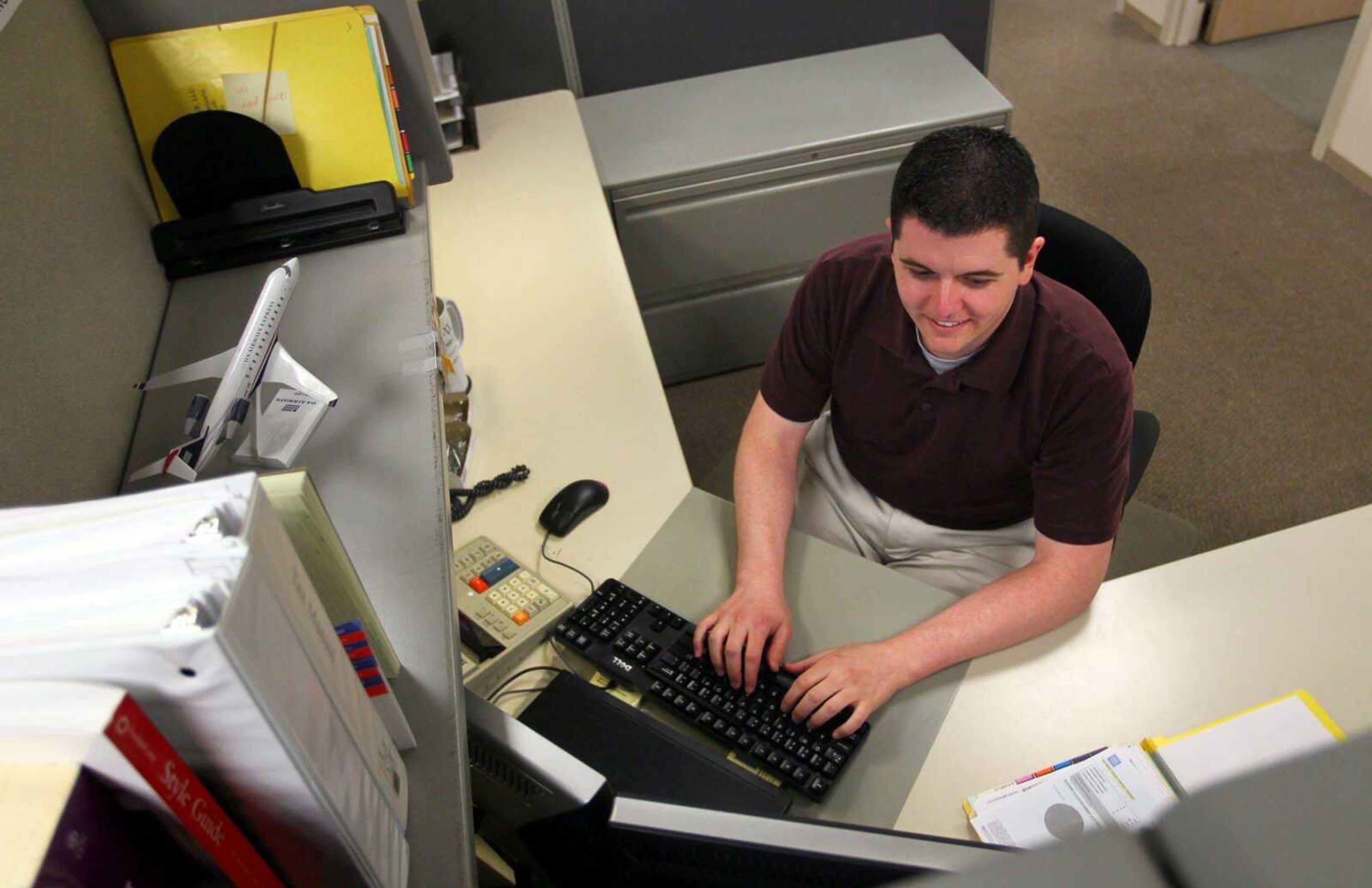ST. LOUIS -- Testicular cancer made David Finklang redefine indestructible, at least for himself -- and he hopes for other "indestructible" young men.
Finklang, 27, was in good enough shape to run about 50 miles a week. He just started a new job as an accountant and was pricing rings to propose marriage to his girlfriend.
But during a run last August, he developed chest pains. His father had heart problems some years earlier. But his father was older, in his 50s. Finklang was young and healthy. So he waited a week. The pains didn't go away.
"I didn't have a primary care physician, so I went to an urgent care office," Finklang said. "They took an X-ray."
A physician told him it was probably a strain.
"He told me to take it easy a little bit, stretch and take [ibuprofen]," Finklang said. "That's what I did and the pain went away."
Four days later, a senior physician from the urgent care center called. He had double-checked Finklang's X-rays. "He told me there was a mass in my chest and I needed to see a doctor," Finklang said.
A biopsy came back as testicular cancer, a mass about the size of a grapefruit.
"I'd only heard of it from what I'd heard about Lance Armstrong," he said.
The other jolt was that he had a form of testicular cancer that develops outside of the testicles. He also had three small tumors in his abdomen -- no cancer in his testicles.
Dr. Bruce Roth, of Siteman Cancer Center's oncology division, said cancer experts believe that cells in a male embryo shift from one place to another, where they'll become part of the reproductive system. But some cells get left behind; those sometimes -- albeit rarely -- develop into cancer.
If there can be good news about a cancer diagnosis, testicular cancer is curable.
There are several forms of testicular cancer. The most common is detected by finding irregular growth or a heavy sensation in the testicles and scrotum. Often, there's no pain or other symptoms.
American Cancer Society data on testicular cancer show that:
* It's rare; about 9,000 men are diagnosed a year. It's the No. 1 cancer for men between the ages of 15 and 35 and occurs in men up to 54.
* The cancer society says that women play a major role in detecting their partners' testicular cancer.
* The survival rate when it's found early, is 100 percent. Found later, the survival rate is 80 percent.
* About 300 men die annually from testicular cancer because it wasn't detected until it spread to vital organs.
"It's the perfect storm of a patient population that doesn't see a doctor on a regular basis, maybe doesn't have medical insurance, or is embarrassed to report it," Roth said. "All that together conspires against early detection."
There are two major forms of testicular cancer. The most common is in cells that produce sperm; it's also the form found outside the testicles. The other is cancer in cells that produce hormones.
There's no known cause -- not lifestyle, trauma, drug use or steroid use.
It's most common among white men, although any ethnic group can develop it.
Removal of the testicle is the most common remedy, Roth said. If the cancer is outside the testicle, it's treated conventionally, with surgery, chemotherapy or radiation.
Finklang opted for chemotherapy.
"Actually, I put myself in Dr. Roth's hands; he's the expert," he said.
Surgery could leave some cells behind, "and in a short time, we'd be right back here," Finklang said.
After three months of chemotherapy the mass in his chest reduced to about the size of a golf ball and those in his stomach disappeared, Finklang said.
"So Dr. Roth says he wants to monitor it before deciding on surgery or more chemo," Finklang said.
He's speaking out to warn other men not to be embarrassed or reticent about addressing testicular cancer or the aches and pains that seem minor at the time.
See a doctor, get checkups, Finklang said.
"No one is indestructible," he said.
Connect with the Southeast Missourian Newsroom:
For corrections to this story or other insights for the editor, click here. To submit a letter to the editor, click here. To learn about the Southeast Missourian’s AI Policy, click here.








